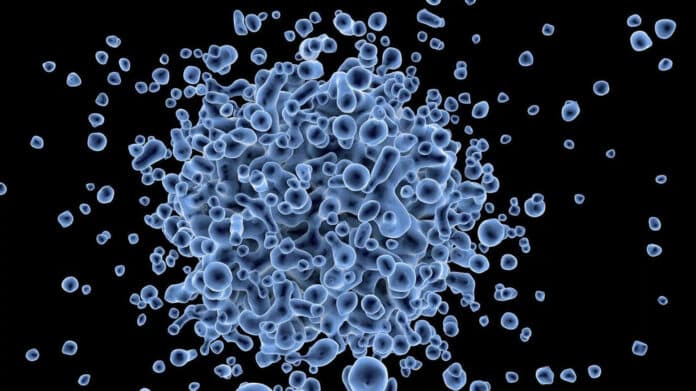We constantly get exposed to various deadly pathogens but rarely fall sick. Even more rarely, such infections become life-threatening, thanks to our innate immune mechanisms, which have a highly robust surveillance and combat system. In a collaborative study, researchers from India, Germany, and the UK have examined how host cells (present in our body) identify invaded pathogens (germs) to heal from infections.
“Pathogenic invasion triggers a battery of immune responses stimulated by surveillance mechanisms of the host. This is generally initiated by recognising conserved microbial molecular structures known as pathogen-associated molecular patterns (PAMPs). Effective sensing of these PAMPs by pattern recognition receptors (PRRs) rapidly induces various host immune responses via the activation of complex signalling pathways triggering pathogen clearance,” researchers mention.
Human cells use intelligent strategies to detect diverse microbes by identifying “Common Patterns” in them. It is a brilliant strategy as the host can identify miscellaneous bugs without expanding its arsenal. Though few such common patterns have already been identified, what remains a mystery is how our cells identify pathogens if the bugs somehow enter the host cells.
“We discovered common patterns present in various bacteria that the host utilizes to mark them, allowing their easy elimination. Unveiling this system could pave the path to new therapeutic practice where one’s immune system can be boosted by supplying such common patterns, similar to vaccines to identify pathogens efficiently as and when they are encountered,” informs Dr Anirban Banerjee of the Indian Institute of Technology (IIT), Bombay.
With antibiotic resistance in microbes growing, harnessing immune defence with host-directed therapy could be an effective regime. The study has uncovered new “Common Patterns” present on various pathogens and revealed the strategy used by host cells to detect such pathogenic signatures. Upon recognition, the host marks such patterns by ubiquitination, which prompts the system to clear them out.
“Surprisingly, ubiquitination is a process that is utilized by the host to discard its own damaged protein. So, essentially utilizing the same process, the host can perform dual functions: discard its damaged proteins and eliminate pathogens. We provided evidence of this in cell-based systems and animal models, where bacteria devoid of such patterns cause lethal infections as the host could not detect it,” Dr Banerjee explains.
The research group comprised twenty-two researchers from IIT Bombay; National Centre for Cell Science, Pune; CSIR-Centre for Cellular and Molecular Biology (CSIR-CCMB), Hyderabad; Indian Institute of Science (IISc), Bengaluru; University of Leicester; University of Liverpool; and the University of Greifswald. The study has been published in Science Advances. The Science and Engineering Research Board (SERB), Government of India, and Sir Henry Dale fellowship, jointly funded by Wellcome and the Royal Society, provided the funding support.
“We initially used computational tools to identify common patterns in the bacteria. These targets were then confirmed by an array of experiments, including the creation of bacterial mutant strains, fluorescence microscopy, pathogen survival, and other in-vitro biochemical experiments. Finally, we demonstrated the relevance of this finding in human diseases by performing animal experiments,” elucidates Dr Banerjee while speaking to India Science Wire.
Researchers believe that the intelligent strategy used by our immune system and its ability to track and kill diverse pathogens could be harnessed to boost the host’s immunity and improve the action of antimicrobial agents. Given the threat antimicrobial resistance poses to human healthcare, harnessing immune defense with host-directed therapy could serve as a sound alternate strategy. (India Science Wire)
Journal Reference
- Shruti Apte , Smita Bhutda, Sourav Ghosh, Kuldeep Sharma, Thomas e. Barton, Soham Dibyachintan, Osheen Sahay, Suvapriya Roy, Akash Raj Sinha, Harikrishna Adicherla, Jyotirmoy Rakshit, Shiying Tang, Akshay Datey, Shweta Santra, Jincy Joseph, Sreeja Sasidharan, Sven Hammerschmidt, Dipshikha Chakravortty, Marco r. Oggioni, Manas Kumar Santra, Daniel r. Neill, and Anirban Banerjee. An innate pathogen sensing strategy involving ubiquitination of bacterial surface proteins. Science Advances. DOI: 10.1126/sciadv.ade1851
